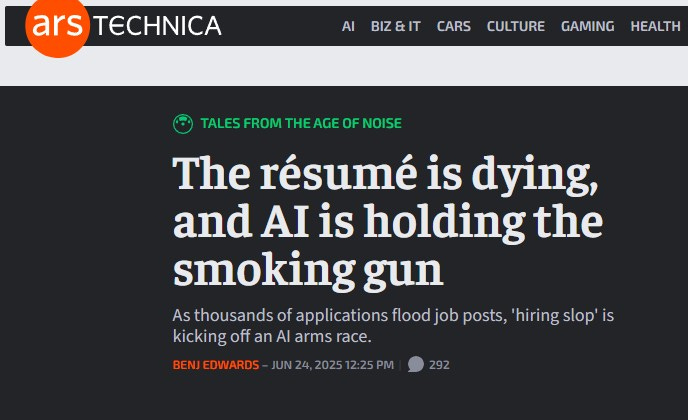Number 4. NBC News. A bumbling game of robot soccer.
Make yourself watch the video. My impression is that I could either watch an hour of this, or I could paint the garage and watch the paint dry. They would both have about the same entertainment payoff.
But the halting, stumbling, shuffling robots who played in China’s fully autonomous futbol match this week represent a serious investment of money and brainpower.
NBC News projects that in 25 years, the U.S. will have 77 million self-propelled robots moving among us, which will be maybe 20% of the population. China is expected to have 300 million. I suppose that makes sense, as their people count is 4 times our own.
The claim in the article (or more correctly, the narrative that China has handed the reporter) is that the overwhelming majority of these mobile bots will be engaged in routine, physical tasks. Production line work and materials handling… probably not things that require original thought.
I will hold my opinion, given that my world view is a little darker than that. I’m not sure why we assume that robots who can play a rudimentary soccer game now — without coaching or online direction — will be harmlessly incapable of anti-social oppression in 25 years.
The soccer bots move awkwardly, bumping into one another and frequently toppling over. There appears to be some confusion between offense and defense. But they are moving on their own, focused on the ball, and with making goals in mind.
Waxing philosophical, I observe the stretcher bearers. An insightful contributor has pointed out that humans have been relegated to the task of providing aid and comfort to downed robots. A pair of bio units (people) carry a fallen bot off the field of honor.
Surely this is a harbinger if we needed one. Ask yourself: In this soccer match, who is the principal and who the servant? Only one of them is lying on the stretcher, to the cheers and adulation of unreasonably emotional fans.
Number 3. ARS Technica. The resume is dying, and AI is holding the smoking gun.
In a competitive job market, the shrinking number of candidates who have decided to actually look for a job — as opposed to spending their days surfing Instagram and waiting for The Next Big Thing to come along — are facing a technological arms race of the resume.
Artificial Intelligence can perform mind-boggling data gathering tasks with blinding speed. Some of that capability may be tinged with a bit of accuracy, pardon the sarcasm. Human job seekers have raced to employ AI to get an edge on their competition.
Providing an AI system with the link to a help-wanted ad, along with a copy of the text of your resume, are both extremely simple and quick tasks from your keyboard or smartphone. If you then ask the platform to integrate key words from the ad into a customized version of your resume, it will result in a submission to the hiring manager.
You will suddenly appear to be an ideal candidate.
AI will even respond to prompts like, “Now re-write the resume with a more enthusiastic tone; also include a few awkward sentences to make it look like a human wrote it.” Voila! A new, fresh-sounding resume.
Why stop there? Just ask your AI assistant to search for job want-ads that meet your criteria, integrate key words into your resume, and digitally respond on your behalf. In fact, do that about a hundred times a day until you obtain an interview for the next step in the hiring process.
LinkedIn reports that their platform is now seeing 11,000 resume submissions per minute. This is a 45% increase from last year, and nearly all of it is due to the rapid acceleration of AI capability.
No wonder Microsoft had to re-open the nuclear power plant at Three Mile Island to meet the electricity needs of their data center.
One HR manager noted in the article received so many replies to her ad for a job that she took down the listing and spent 3 months sifting through responses, trying to find the human among the noise.
Where is Waldo when you really need him?
It gets worse than this, but I have neither the time nor the smarts to explain how AI systems bury code in the text of a resume to foil an AI-based review by the hiring agency.
Maybe we will see a resurgence of physical business cards and firm handshakes at business luncheons, as actual humans meet face to face. What a concept.
Number 2. YouTube. Press Conference by Dan Caine, Chairman of the Joint Chiefs.
In a lengthy (18 minute) press conference, new Chairman of the Joint Chiefs of Staff Dan Caine gave an uncharacteristically detailed account of the recent U.S. attack on Iran’s nuclear production facilities.
Air Force General Caine spoke of the two operators of the DTRA (Defense Threat Reduction Agency) who have been studying Iran’s Fordow nuclear site for an incredible 15 years. They became aware of the site through satellite photos when construction first began in 2009, and realized the uranium enrichment program was buried deep underground to avoid prying eyes.
No nuclear installation making peaceful nuclear power is constructed in that way. The DTRA analysts recognized that the capability to destroy the production of a nuclear bomb in a location 300 feet underground existed nowhere in the world.
To that end, reports Gen. Caine, one of the analysts was tasked to reach out to U.S. civilian contractors to develop a special weapon designed specifically for the Fordow nuclear enrichment site. The result was the half-billion-dollar GBU-57 Massive Ordnance Penetrator.
In the video, Caine goes into great detail explaining how the 12 bunker buster bombs drilled into air shafts at Fordow, burrowing deep into the mountain fortress, and exploded on target at the bottom. Presumably this was the same method of attack used at Natanz by the pair of bombs dropped there.
The Chairman also spoke of the B-2 Stealth bomber crews who made the 37-hour roundtrip from Missouri to Tehran. Their families were completely unaware of the assignment until late into the mission, when they were contacted and brought to Whiteman Air Force Base to greet their loved ones on their successful return.
Caine also makes detailed comments about the very young and very small force of soldiers protecting the U.S. Central Command center at Al Udeid Air Base in Qatar. A 28-year-old Captain commanded a unit of 44 soldiers. They launched the largest Patriot missile defense exchange the U.S. has ever delivered, thwarting an Iranian attack of incoming missiles.
Dan Caine wrapped up his remarks with a quite pointed statement to others around the world who might be thinking of ways to hide their weaponization efforts from U.S. surveillance. Speaking to adversaries, relative to the 15-year effort to neutralize the Fordow site, Caine said: “You should know that there are other DTRA team members out there studying targets for the same amount of time.”
This might be a good time for potential adversaries to figure out how to manufacture goods that U.S. consumers want to buy, rather than pursuing dreams of widespread death and destruction.
And I’ll conclude with this bit of blindingly obvious research that found its way into one of our nation’s premier publications of the American Psychological Association.
A team of researchers from the University of Missouri studied 2,300 participants to determine what most contributed to their sense of well-being.
I am glad they focused on that subject, because we all know that a sense of well-being is the most important thing in all our lives. Never mind honesty, integrity, honor, duty, courage, faithfulness to family, or personal responsibility… No. It’s all about a personal sense of well-being.
The findings apparently surprised team leaders Megan Edwards and Laura King, PhDs. They found that hope is more important than happiness.
“Our research shifts the perspective on hope from merely a cognitive process related to goal attainment to recognizing it as a vital emotional experience that enriches life’s meaning.”
So… Missouri tax dollars well spent. We now know that hope — the expectation that things will be better tomorrow than they are today — is more significant to us than merely being happy in the present moment. I wish the article would have said how much it cost us to learn that.
Perhaps these highly educated researchers could have reviewed the Apostle’s comments in Romans 8:
24For we are saved by hope: but hope that is seen is not hope: for what a man seeth, why doth he yet hope for? 25But if we hope for that we see not, then do we with patience wait for it.
And with that, I hope you have a safe a enjoyable Independence Day.
Mrs. Alligator and I have been watching old History Channel documentaries, complete with 1990s-style CGI graphics, of the World War 2 Pacific theatre. To say that U.S. soldiers, sailors and Marines sacrificed much would insult with faint praise. I suspect they hoped that the days that would follow their own time would be much better, safer and more prosperous.
Grant that we may build on their sacrifice in a way that honors our God and serves our fellow man.
Thanks for joining The Alligator News Roundup for Friday, July 4, 2025, Independence Day in the United States of America.
Have a good weekend.




















Share this post